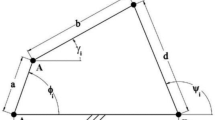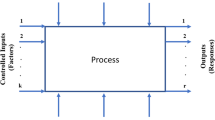Abstract
We generate cutter paths free of interference and gouging for manufacturing model propellers using a five-axis numerical control (NC) machine. Our approach is faster than using a general-purpose computer-aided design (CAD)/computer-aided manufacturing (CAM) system. A roughing cut is made using only three axes for efficiency, and the finishing cut is made using all five axes to avoid collisions. Elements of the cutter path that might produce gouging are eliminated and the pose of the cutter is adjusted to eliminate interference. A number of models, including surface-piercing propellers, have been manufactured.































Similar content being viewed by others
References
Kuo H-C, Dzan W-Y (2002) The analysis of nc machining efficiency for marine propellers. J Mater Process Technol 124:389–395
Youn JW, Jun YT, Park SH (2003) Interference-free tool path generation in five-axis machining of a marine propeller. Int J Prod Res 41(18):4383–4402
Carlton J (2007) Marine propellers and propulsion, 2nd edn. Butterworth-Heinemann, London
Kim YC (2006) Design of propeller geometry using blade section adapted to surface streamlines. PhD thesis, Seoul National University, South Korea
Neely SK (1997) Non-cylindrical blade geometry definition. Propellers/Shafting’97 Symposium 31:13–1–13–12
Farin G, Hansford D (2000) The essentials of CAGD. A. K. Peters, USA
Choi BK, Jerard RB (1998) Sculptured surface machining. Kluwer, Dordrecht
Aomura S, Uehara T (1990) Self-intersection of an offset surface. Comput Aided Des 22:417–422
Ravi Kumar GVV, Shastry KG, Prakash BG (2002) Computing non-self-intersecting offsets of nurbs surfaces. Comput Aided Des 34:209–228
Piegl LA, Tiller W (1999) Computing offsets of nurbs curves and surfaces. Comput Aided Des 31:147–156
Acknowledgments
This work was supported by grant nos. R01-2004-000-10518-0 and R01-2005-000-11257-0 from the Basic Research Program of the Korea Science and Engineering Foundation, and in part by the RIMSE R&BD Program.
Author information
Authors and Affiliations
Corresponding author
About this article
Cite this article
Kim, YC., Lee, YM., Son, Mj. et al. Generating cutter paths for marine propellers without interference and gouging. J Mar Sci Technol 14, 275–284 (2009). https://doi.org/10.1007/s00773-008-0033-2
Received:
Accepted:
Published:
Issue Date:
DOI: https://doi.org/10.1007/s00773-008-0033-2




